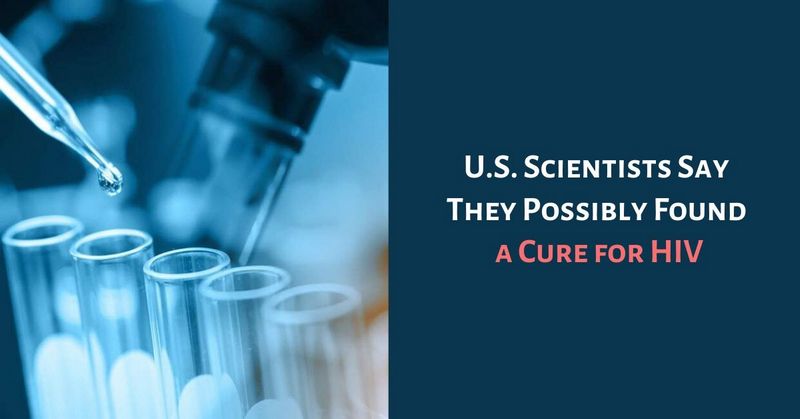
U.S. scientists have invented an innovative and promising approach to treating human immunodeficiency virus (HIV), which not only detects the virus in the patient’s immune system, but also destroys it forever, and this is the first step to creating a vaccine against HIV. The research was conducted by scientists from the University of Pittsburgh.
The key to developing this treatment method has been immune cells invented to identify another virus – cytomegalovirus.
Clinical studies are still needed to prove the effectiveness of this treatment option, however, scientists believe that this method will help to create a vaccine that will make continuous use of antiretroviral drugs unnecessary.
Modern highly active antiretroviral drugs are able to suppress HIV quite well but they cause various adverse reactions and when you stop taking them, HIV often returns.
“Find and destroy”
It is currently impossible to completely get rid of the immunodeficiency virus because HIV is highly mutagenic and is able to go into an inactive, latent form. When this happens, the virus invades the DNA of immune cells – the so-called T-helpers – and hides in them all the time while the patient is taking antiretroviral therapy drugs.
“Many scientists are trying to develop a treatment for HIV, and all these methods are based on the pattern of “find and destroy “- that is, detecting the virus and destroying it. Now there are a few breakthrough treatments that can kill HIV, but the main goal is to detect cells, in which the virus hides,” says one of the authors of the study, Rose Mathews.
Mathews and her colleagues studied the response of another virus, which could also turn into a latent form. This is cytomegalovirus that can cause some serious diseases but is often well controlled by the human immune system. Its carriers are more than 50% of the adult population of the planet, and 95% of HIV-infected carriers of this virus.
According to scientists, in 20% of people, it’s possible to detect cytomegalovirus. According to scientists, HIV can hide in these very cytomegalovirus-specific immune cells.
“Therefore, we tried to create immunotherapy that would not only suppress immunodeficiency virus but would also turn on T-helper cells with the ability to identify cytomegalovirus,” says one of the study’s authors, Carol Ricardo, a founder of Trusted Tablets online pharmacy.
During the experiment, many liters of blood from HIV patients had to be examined to detect these specific T-helpers.
“It is necessary to collect a lot of blood from patients undergoing highly active antiretroviral therapy to find the T-helpers that hide the immunodeficiency virus. After all, it can be just one cell out of 10 million,” says study author George Kendall.
“Double kill”: New HIV vaccine is effective and safe
The recent clinical trials of an HIV vaccine, which should protect a person from different strains, have also shown encouraging results.
An article analyzing the results of the study was published in the scientific journal Lancet. It says that the vaccine triggered the correct immune response of all 393 test participants. It also helped protect monkeys from a virus similar to HIV.
Now it is necessary to conduct further tests and find out whether it can protect a person from HIV. About 37 million people live in a world with HIV or AIDS.
Despite the fact that HIV treatment is becoming more effective every year, so far the vaccine against this virus and therapy have remained only in the dreams of doctors and patients. Pre-exposure prophylaxis for HIV is effective but should be taken regularly (almost daily).
A new, so-called mosaic vaccine consists of proteins of different strains of this virus, therefore, it should become a universal defense.
This study was a randomized, controlled, double-blind study using a placebo, which is considered the standard method in medicine. Scientists from the Pharmaceutical Research and Manufacturers of America (PhRMA) tested different vaccine options on healthy participants 18 to 50 years old who were not infected with HIV. Participants were recruited in several countries – the United States, Rwanda, Uganda, South Africa and Thailand. Each was vaccinated for 48 weeks.
All types of vaccines have been shown to be effective and safe for patients.
In a parallel study, scientists vaccinated Rhesus monkeys against an HIV-like virus that infects monkeys. The test vaccine protected more than two-thirds of the experimental monkeys.
Paul Purcell, a professor from Harvard Medical School, makes a reservation that it is too early to conclude that this vaccine can prevent infection.
“The ability to provoke a specific reaction of the immune system does not mean that the vaccine will necessarily protect a person from becoming infected with HIV,” he explains.
However, the results of the latest study are encouraging, and scientists are already planning to test the vaccine in 2,600 women in southern Africa.
This is not the first HIV vaccine to be tested in humans. For example, one of the previous ones has already been tested in Thailand and showed a decrease in the level of infection by almost a third. But this was not enough for its widespread use.
Dr. Mary Gordon, a representative of Merck, noted that it is not worth rushing to conclusions, although there is hope.
She added that at the moment there are effective ways to prevent infections, such as contraception and antiretroviral therapy, which prevents the transmission of infection.
Watch the video below to learn more about research toward an HIV cure:
 English
English Deutsch
Deutsch Français
Français Italiano
Italiano Español
Español